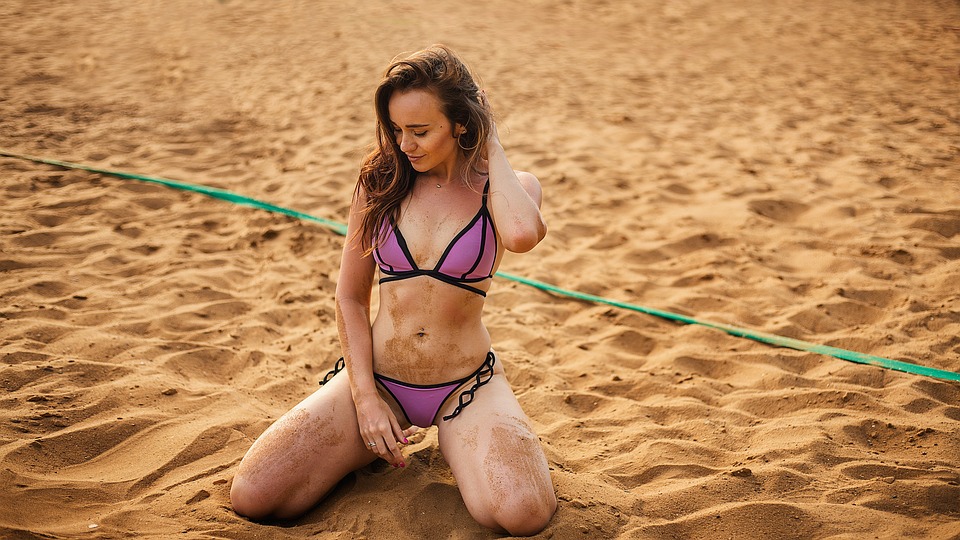Bikini Line Yeast Infection: Causes and Symptoms
As summer approaches, many women start thinking about their bikini line and how to keep it looking smooth and hair-free. However, what many women don’t think about is the risk of a yeast infection in this area. Bikini line yeast infections can be extremely uncomfortable and even painful, causing itching, redness, and soreness. In this article, we’ll explore the causes and symptoms of bikini line yeast infections, as well as how to prevent and treat them.
What is a Yeast Infection?
Before we dive into the specifics of bikini line yeast infections, let’s first discuss what a yeast infection is. A yeast infection, also known as candidiasis, is a fungal infection that can affect various parts of the body, including the mouth, genitals, and skin folds. Yeast infections are caused by an overgrowth of Candida, a type of fungus that naturally resides in the body. When the balance of bacteria and yeast in the body is disrupted, Candida can grow out of control, leading to an infection.
Causes of Bikini Line Yeast Infections
Bikini line yeast infections are caused by the same type of fungus that causes vaginal yeast infections. However, the environment of the bikini line area is different from the vagina, making it more susceptible to infection. The warm and moist environment of the bikini line area, combined with the friction from tight clothing and shaving, can create the perfect conditions for Candida to grow.
Some common causes of bikini line yeast infections include:
– Tight clothing: Wearing tight clothing, such as tight underwear or leggings, can trap moisture and heat, creating the perfect environment for Candida to thrive.
– Shaving: Shaving the bikini area can cause small cuts and abrasions, which can allow Candida to enter the skin and cause an infection.
– Antibiotics: Taking antibiotics can disrupt the natural balance of bacteria and yeast in the body, leading to an overgrowth of Candida.
– Diabetes: People with diabetes are more susceptible to yeast infections, as high blood sugar levels can create an ideal environment for Candida to grow.
Symptoms of Bikini Line Yeast Infections
The symptoms of a bikini line yeast infection can vary from person to person, but some common symptoms include:
– Itching and burning in the bikini area
– Redness and irritation
– Soreness and discomfort
– Small bumps or blisters
– Thick, white discharge
– Foul odor
If you’re experiencing any of these symptoms, it’s important to see a healthcare provider to confirm whether you have a yeast infection and to rule out any other conditions.
Preventing Bikini Line Yeast Infections
Preventing bikini line yeast infections involves maintaining good hygiene and avoiding activities that can disrupt the natural balance of bacteria and yeast in the body. Here are some tips for preventing bikini line yeast infections:
– Wear loose-fitting clothing: Avoid wearing tight clothing that can trap moisture and heat in the bikini area. Opt for loose-fitting cotton underwear and clothing instead.
– Practice good hygiene: Keep the bikini area clean and dry by washing with a mild soap and water, and drying thoroughly after showering or swimming.
– Avoid shaving: If possible, avoid shaving the bikini area. If you do choose to shave, use a clean, sharp razor and avoid shaving too closely to the skin.
– Avoid douching: Douching can disrupt the natural balance of bacteria and yeast in the body, making it more susceptible to infection.
– Manage diabetes: If you have diabetes, work with your healthcare provider to manage your blood sugar levels and prevent yeast infections.
Treating Bikini Line Yeast Infections
If you do develop a bikini line yeast infection, there are several treatment options available. Your healthcare provider may recommend an over-the-counter antifungal cream or prescribe an oral antifungal medication. It’s important to follow the instructions for use carefully and to continue using the medication for the recommended duration, even if your symptoms improve.
In addition to medication, there are some home remedies that may help relieve the symptoms of a yeast infection. These include:
– Applying a warm compress to the affected area
– Using a topical cream or ointment containing tea tree oil
– Taking probiotics to restore the natural balance of bacteria and yeast in the body
It’s important to note that if you’re experiencing severe or recurring yeast infections, you should see a healthcare provider to rule out any underlying conditions that may be contributing to your symptoms.
Conclusion
Bikini line yeast infections can be uncomfortable and even painful, but with proper prevention and treatment, they can be easily managed. By taking steps to maintain good hygiene, avoiding tight clothing and shaving, and seeking treatment when necessary, you can keep your bikini line looking and feeling healthy all summer long. If you’re experiencing symptoms of a yeast infection, don’t hesitate to see a healthcare provider for diagnosis and treatment.
Common Inquiries About Bikini Line Yeast Infection
What is a Bikini Line Yeast Infection?
A Bikini Line Yeast Infection is a type of fungal infection that affects the skin around the bikini area. It is caused by a type of fungus called Candida and can cause symptoms such as itching, redness, and pain. The infection can spread to other parts of the body if not treated properly.
1. Candida is the main cause of Bikini Line Yeast Infection.
2. Symptoms of the infection include itching, redness, and pain.
3. The infection can spread to other parts of the body.
What are the Causes of Bikini Line Yeast Infection?
There are several factors that can contribute to the development of Bikini Line Yeast Infection. Some of these factors include wearing tight clothing, poor hygiene, using scented products, and taking antibiotics. Women who are pregnant or have diabetes are also at a higher risk of developing the infection.
1. Wearing tight clothing can contribute to the development of the infection.
2. Poor hygiene can also increase the risk of developing Bikini Line Yeast Infection.
3. Women who are pregnant or have diabetes are at a higher risk.
What are the Symptoms of Bikini Line Yeast Infection?
The symptoms of Bikini Line Yeast Infection can vary from person to person but may include itching, redness, and pain in the affected area. In some cases, the skin around the bikini line may also be dry or flaky. Women may experience a white, cottage cheese-like discharge and pain during sex.
1. Symptoms include itching, redness, and pain.
2. The skin around the bikini line may also be dry or flaky.
3. Women may experience a white, cottage cheese-like discharge and pain during sex.
How is Bikini Line Yeast Infection Diagnosed?
Bikini Line Yeast Infection is usually diagnosed based on a physical examination and the patient’s symptoms. In some cases, a sample of the discharge may be taken and tested to confirm the presence of Candida. If the infection is recurring or severe, a healthcare provider may perform additional tests to rule out other conditions.
1. Diagnosis is usually based on a physical examination and symptoms.
2. A sample of the discharge may be taken and tested to confirm the presence of Candida.
3. Additional tests may be performed if the infection is recurring or severe.
How is Bikini Line Yeast Infection Treated?
Bikini Line Yeast Infection is usually treated with antifungal medications, either in the form of creams, ointments, or oral medications. It is important to follow the prescribed treatment regimen and to keep the affected area clean and dry. Wearing loose-fitting clothing and avoiding scented products can also help prevent the infection from recurring.
1. Antifungal medications are the main form of treatment.
2. It is important to follow the prescribed treatment regimen.
3. Wearing loose-fitting clothing and avoiding scented products can help prevent the infection from recurring.
Introduction
Bikini line yeast infection is a common condition among women. It is caused by a fungus known as Candida albicans. This type of infection can cause discomfort, itching, and irritation to the affected area. Unfortunately, there are many misconceptions about this condition that have led to confusion and misinformation. In this article, we will discuss some of the most common misconceptions about bikini line yeast infection.
Misconception 1: Only women get bikini line yeast infections
Contrary to popular belief, men can also get bikini line yeast infections. Although it is more common in women, men can also develop this condition. This happens when the Candida fungus overgrows in the moist and warm environment of the groin area. Men who wear tight-fitting clothes or have poor hygiene are more prone to getting this condition.
Misconception 2: Bikini line yeast infections are always caused by poor hygiene
While poor hygiene can contribute to the development of a bikini line yeast infection, it is not always the cause. Some other factors that can cause this condition include wearing tight-fitting clothes, using scented soaps or bubble baths, taking antibiotics, and having a weakened immune system. If you are experiencing symptoms of a bikini line yeast infection, it is important to see a doctor to determine the underlying cause.
Misconception 3: Bikini line yeast infections are sexually transmitted
Bikini line yeast infections are not sexually transmitted. However, sexual activity can increase the risk of developing this condition. This is because sexual activity can cause micro-tears in the skin, which can provide an entry point for the Candida fungus. It is also important to note that having a bikini line yeast infection does not mean that you have a sexually transmitted infection (STI).
Misconception 4: Over-the-counter medications can cure bikini line yeast infections
Over-the-counter medications such as antifungal creams and suppositories can provide temporary relief from the symptoms of a bikini line yeast infection. However, they do not cure the underlying infection. If you have a recurring or severe bikini line yeast infection, it is important to see a doctor. They can prescribe stronger medications such as oral antifungal medications or prescribe a longer course of treatment.
Misconception 5: Bikini line yeast infections are not serious
Bikini line yeast infections may seem like a minor inconvenience, but they can be serious if left untreated. In some cases, the infection can spread to other parts of the body and cause more serious complications. Women who are pregnant, have diabetes, or have a weakened immune system are at a higher risk of developing complications from a bikini line yeast infection. If you are experiencing symptoms of a bikini line yeast infection, it is important to see a doctor for diagnosis and treatment.
Conclusion
Bikini line yeast infections are a common condition that can cause discomfort and irritation to the affected area. However, there are many misconceptions about this condition that can lead to confusion and misinformation. It is important to understand the true causes and risks of bikini line yeast infections in order to prevent and treat them properly. If you are experiencing symptoms of a bikini line yeast infection, it is important to see a doctor for diagnosis and treatment.
Bikini Line Yeast Infection
#Bikini #Line #Yeast #Infection


